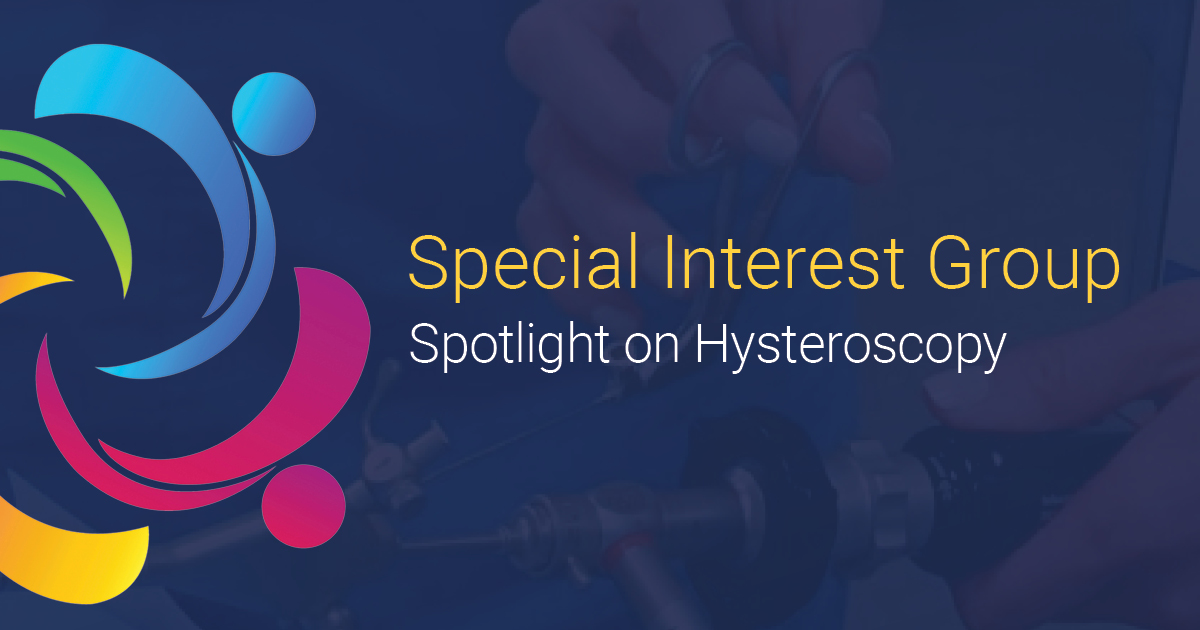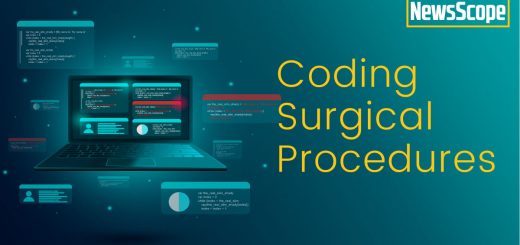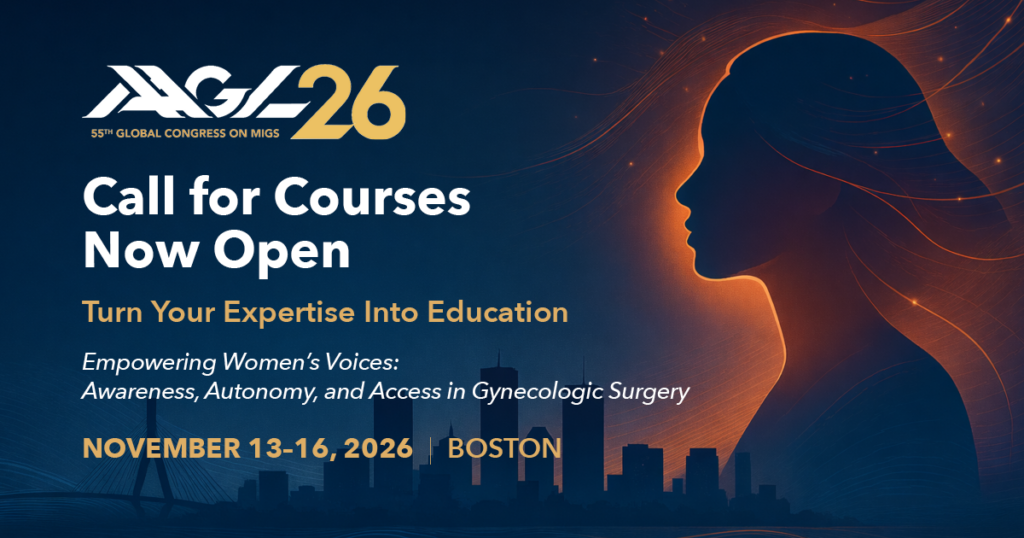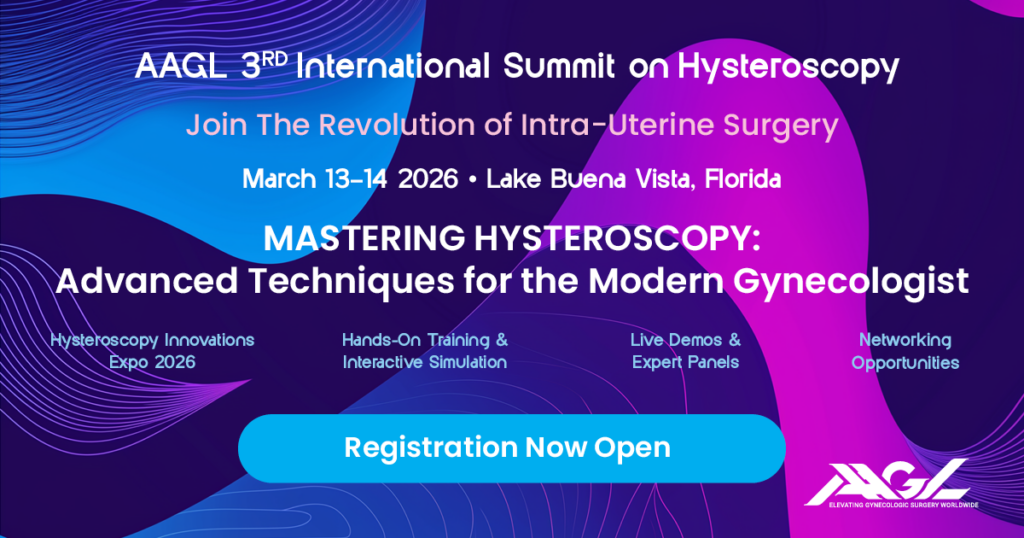Spotlight On: Hysteroscopy

This month we cast a spotlight on articles, SurgeryU videos, and Journal of Minimally Invasive Gynecology (JMIG) article recommendations from the AAGL Hysteroscopy Special Interest Group (SIG) led by Chair Professor Sergio Haimovich, MD, PhD.
Access to SurgeryU and JMIG are two of the many benefits included in AAGL membership. The SurgeryU library features high-definition surgical videos by experts from around the world. JMIG presents cutting-edge, peer-reviewed research, clinical opinions, and case report articles by the brightest minds in gynecologic surgery.
SurgeryU video recommendations by our SIGs are available for public access for a limited time. The links to JMIG article recommendations are accessible by AAGL members only. For full access to SurgeryU, JMIG, CME programming, and member-only discounts on meetings, join AAGL today!
Video 1: Tips and Tricks for the Difficult Hysteroscopy by Drs. Olga M. Fajardo, Kate Chaves, Ted L Anderson, and Lara Harvey.
This video is very didactive, giving practical tips and tricks to overcome some of the most frequent difficulties that you may find during hysteroscopy. It is very recommended for those who are beginners but still have doubts about how to deal with potential difficult situations.
Video 2: Hysteroscopy for Retained Products of Conception by Drs. Caitlin Jago, Brittany Kathleen MacGregor, Dong Bach Nguyen, and Sukhbir S. Singh.
Today we understand the importance of not doing blind procedures inside the uterine cavity if we have an alternative under direct visualization. This video shows exactly that. Instead of performing blind dilation and curettage (D&C) for retained products of conception (RPOC), we learn how to treat RPOC by hysteroscopy technique, avoiding damage to the endometrium.
Click Image to View Video
JMIG Article Recommendation #1: Indication Criteria of Hysteroscopic Surgery for Secondary Infertility Due to Symptomatic Cesarean Scar Defect Based on Clinical Outcomes: A Retrospective Cohort Study.
Tsuji S, Nobuta Y, Yoneoka Y, Nakamura A, Amano T, Takebayashi A, Hanada T, Murakami T, Journal of Minimally Invasive Gynecology, March 2023.
Hysteroscopic surgery criteria for patients with cesarean scar defect (CSD) are unclear. This retrospective cohort study brings some light to this issue, helping us in the decision of what is the best approach for the surgical correction of a symptomatic CSD responsible of infertility.
JMIG Article Recommendation #2: The Gynecologic Resectoscope: An Endangered Species
Wortman, M., Journal of Minimally Invasive Gynecology, April 2023.
This publication discusses the decline of resectoscopy in the USA, including a special analysis of the current situation of this surgical technique, emphasizing the different causes, and comparing the American situation with other realities.
Pregnancy after Asherman’s: Beware of High-Risk Obstetrical Complications by Miriam Hanstede, MD
A 34-year-old woman was referred for surgical management of intrauterine adhesions (IUA) after being diagnosed with Asherman’s syndrome following a postpartum curettage. She had a history of repeated miscarriages. During the surgery, dense intrauterine adhesions were found in the isthmic area in the central left site of the uterine cavity, and the right tubal ostium was completely obliterated. The American Fertility Society (AFS) provide classifications for IUA. The classification of AFS for IUA uses three items, including the extent of the cavity involved, the type of adhesions, and the menstrual pattern. Since more than two-thirds of the uterine cavity was involved, the adhesions were classified as severe based on the AFS-score (Picture 1).
 Picture 1. Uterine cavity with severe adhesions
Picture 1. Uterine cavity with severe adhesions
An extensive hysteroscopic adhesiolysis was performed with concomitant fluoroscopy, which allowed the surgeon to view hidden endometrial pockets behind the adhesions and visualize the fallopian tubes as landmarks for dissecting the adhesions throughout the procedure. The full anatomy of the uterine cavity was successfully restored, and the patient received adjuvant estrogen treatment postoperatively. A Cu-less IUD was also placed for secondary prevention of adhesion recurrence.
The patient returned to the office for a second-look hysteroscopy after ten weeks and the IUD was removed. The endometrium was found to be thin, at 5mm. The patient was informed that she could try to become pregnant again if she wished to do so.
Three months later, she spontaneously conceived and had regular pregnancy checkups in the hospital. At 30 weeks, an advanced ultrasound was performed to check for abnormal invasive placenta due to the high incidence seen in Asherman’s patients. At 37 weeks of gestational age, she began experiencing contractions and was admitted to the maternity ward of the hospital. During the admission, her contractions were painful, but she did not have any cervical dilation. An ultrasound was performed, and a bradycardia was registered. The patient was immediately taken to the operating room, where an emergency cesarean section was performed under general anesthesia. Upon accessing the abdominal cavity, a hemoperitoneum of 2500mL was found, and a male infant was discovered floating outside the uterine cavity. The infant was immediately handed to the neonatal team for assessment and neonatal life support (3810 g, APGAR score: 0/2/4 {1/5/10 min}, umbilical artery pH: 6.80). A fundal uterine rupture was detected from left to right, with a 5 cm tear in the posterior wall of the uterus (Picture 2).
 Picture 2: Fundal Uterine Rupture
Picture 2: Fundal Uterine Rupture
The rupture site was repaired using double-layer closure, and a total of 4000 ml of blood was lost during the surgery. Blood transfusion with 4 units of packed red blood cells, 4 units of packed platelets, and 2 units of packed fresh frozen plasma were given during surgery. Unfortunately, the fetus suffered from severe asphyxia and died the next day.
In conclusion, this case highlights the potential obstetrical complications associated with pregnancy after Asherman’s syndrome. Despite successful surgical intervention and subsequent imaging indicating restoration of uterine anatomy, the patient experienced a rare, but devastating, complication of fundal uterine rupture during labor resulting in fetal demise. This case underscores the need for close monitoring of high-risk pregnancies in women with a history of Asherman’s syndrome
About the Author:

Dr. Miriam Hanstede is a Board Member of the AAGL Hysteroscopy Special Interest Group and Head of the Asherman Expertise Center at the Spaarne Gasthuis Haarlem in the Netherlands.
Diode Laser in Hysteroscopy: Revolutionizing Gynecological Office Procedures by Sergio Haimovich, MD, PhD
Diode lasers are a type of solid-state laser that emit light in the near-infrared range of the electromagnetic spectrum. In hysteroscopy, the most used wavelength is 1470nm, which has affinity both to water (cuts and vaporizes) and to hemoglobin (coagulates) simultaneously.
Diode lasers offer several advantages over other laser types and traditional methods in hysteroscopy, such as:
- Precision and Control: Diode lasers provide exceptional control and precision during the procedure with minimal damage to surrounding healthy tissue. This reduces the risk of complications and improves patient outcomes. The dispersion of the heat is of 0.5 to 1mm, making it a perfect energy for office procedures, there is no myometrial involvement and by this, there is no pain.
- Hemostatic Effect: The diode laser’s ability to coagulate blood vessels during the procedure minimizes blood loss.
- Reduced Operating Time: The use of a diode laser in hysteroscopy can shorten the operating time as compared to traditional methods, such as electrosurgery, due to its efficiency in cutting and coagulating tissue.
- Enhanced Visualization: The diode laser’s ability to cut and coagulate simultaneously allows for improved visualization of the surgical field during hysteroscopy, as the reduced bleeding results in a clearer view of the operative site.
The use of a diode laser in hysteroscopy has been successfully employed in various applications, including:
- Myomectomy: The removal of uterine fibroids (myomas) using a diode laser can be performed with greater precision and control, minimizing damage to the surrounding tissue, and reducing blood loss. The laser’s hemostatic effect also reduces the risk of postoperative complications such as infection or adhesion formation. (1)
- Polypectomy: Diode lasers can be used to remove uterine polyps, providing better visualization of the operative site, and allowing for more precise removal with minimal damage to surrounding tissue. (2)
- Metroplasty for intrauterine septum (figure 1) or dysmorphic uterus: The use of a diode laser in hysteroscopy can facilitate the removal of intrauterine septum, reducing the risk of complications and improving patient outcomes. (3-4)
 Figure 1. Diode Laser Metroplasty
Figure 1. Diode Laser Metroplasty
In conclusion, the precision, control, and hemostatic effect provided by the diode laser have improved patient outcomes, reduced complications, and decreased operating time. As technology continues to advance, it is expected that the use of diode lasers in hysteroscopy will become even more widespread, further enhancing the safety and effectiveness of this essential gynecological procedure.
References
- Haimovich S, Mancebo G, Alameda F, Agramunt S, Solé-Sedeno JM, Hernández JL, Carreras R. Feasibility of a new two-step procedure for office hysteroscopic resection of submucous myomas: results of a pilot study. Eur J Obstet Gynecol Reprod Biol. 2013 Jun;168(2):191-4. doi: 10.1016/j.ejogrb.2013.01.002. Epub 2013 Jan 31. PMID: 23375904.
- Lara-Domínguez MD, Arjona-Berral JE, Dios-Palomares R, Castelo-Branco C. Outpatient hysteroscopic polypectomy: bipolar energy system (Versapoint®) versus diode laser – randomized clinical trial. Gynecol Endocrinol. 2016;32(3):196-200. doi: 10.3109/09513590.2015.1105209. Epub 2015 Nov 3. PMID: 26527251.
- Esteban Manchado B, Lopez-Yarto M, Fernandez-Parra J, Rodriguez-Oliver A, Gonzalez-Paredes A, Laganà AS, Garzon S, Haimovich S. Office hysteroscopic metroplasty with diode laser for septate uterus: a multicenter cohort study. Minim Invasive Ther Allied Technol. 2022 Mar;31(3):441-447. doi: 10.1080/13645706.2020.1837181. Epub 2020 Oct 22. PMID: 33090039.
- Bilgory A, Shalom-Paz E, Atzmon Y, Aslih N, Shibli Y, Estrada D, Haimovich S. Diode Laser Hysteroscopic Metroplasty for Dysmorphic Uterus: a Pilot Study. Reprod Sci. 2022 Feb;29(2):506-512. doi: 10.1007/s43032-021-00607-1. Epub 2021 May 8. PMID: 33966184.
About the Author:
Professor Sergio Haimovich, MD, PhD
Dr. Haimovich is the Chair of the AAGL Hysteroscopy Special Interest Group, Director of the Gynecology Department at the Laniado University Hospital in Netanya, Israel and Head of the Reproductive Surgery Unit at the Embriogyn Clinic in Tarragona, Spain.












